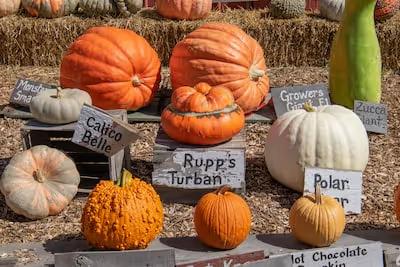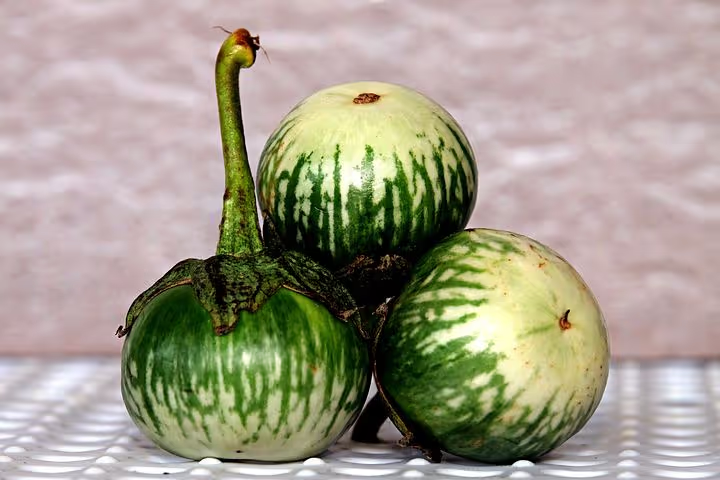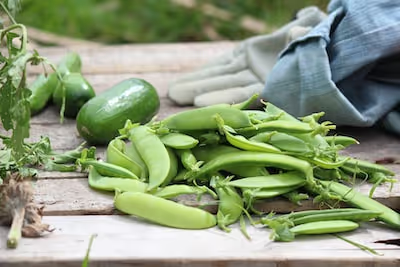Growing Wormwood: A Simple Guide to Planting and Care

Growing Wormwood
Growing wormwood at home rewards gardeners with silvery foliage, aromatic leaves and herbal potential. Sow seeds in sunny, well-drained soil, water moderately, and prune regularly to maintain vigor. Simple care ensures lush, healthy Artemisia absinthium thrives—read on to master cultivating this evocative herb.
Cheatsheet: Quick Reference for Wormwood Cultivation
🌱 Site & Soil
Full sun, well-drained, sandy soil. pH: 6.0–7.5.
🗓️ Planting
- Direct sow after last frost (50°F/10°C+ soil).
- Or start seeds indoors 4–6 weeks before frost ends.
- Surface-sow; light aids germination.
- Space plants 18–24 in/45–60 cm apart.
Loosen soil, remove weeds, mix in compost if low fertility.
Scatter seeds, press lightly, do not bury. Water gently.
Keep moist until established. Thin to final spacing.
💧 Water & Feeding
- Drought-tolerant mature; water young plants weekly.
- Avoid overwatering—roots dislike wet feet.
- Needs little fertilizing; excess reduces potency and aroma.
✂️ Pruning & Care
- Prune in spring to shape & promote bushiness.
- Divide clumps every 2–3 years to revitalize.
- Remove old stems in fall or early spring.
🦟 Uses & Benefits
- Repels pests—plant near carrots & fruit trees.
- Main source for absinthe & herbal remedies.
- Research: Antimicrobial & digestive aid (use with caution).
🔧 Tools and Products You'll Need
- Hand trowel
- Watering can
- Gloves
- Seed trays or pots (for starts)
- Compost
- Mulch (for weed suppression)
⚠️ Quick Facts
- Hardy to USDA Zone 4 (-30°F/-34°C).
- Grows up to 4’/1.2m in a season.
- Allelopathic: Can inhibit growth of nearby herbs.
- Long-lived perennial: Up to 10 seasons.
Choosing the Right Wormwood Variety
I recall the first time I encountered wormwood (Artemisia absinthium) at a friend’s garden, its silvery-green foliage standing out amongst the herbs. The distinctive aroma intrigued me, leading me down the rabbit hole of cultivating this herb for myself.
Before planting, decide exactly what you need. Wormwood varieties differ significantly in their uses and appearance.
- Common Wormwood (Artemisia absinthium): Classic choice, renowned for medicinal and historical allure. Great if you're into traditional gardening.
- Roman Wormwood (Artemisia pontica): Slightly less pungent aroma. Perfect for smaller spaces and borders.
- Sweet Wormwood (Artemisia annua): Famous in herbal circles for malaria treatments, thanks to compounds like artemisinin, according to the World Health Organization.
Ideal Growing Conditions
I learned quickly that wormwood thrives effortlessly in the right environment. It’s adaptable yet demands certain non-negotiables.
Sunlight Exposure
Plant wormwood where sunlight generously bathes your garden. Aim for at least six hours of direct sun daily to keep the plant vigorous and aromatic.
Soil Preferences
Well-draining soil is non-negotiable. Heavy clay soils lead rapidly to root rot—something I learned firsthand after losing a prized Artemisia to overly dense earth.
To improve drainage, mix organic compost, coarse sand, or gravel into the planting area.
“Wormwood tolerates drought better than moisture. Avoid waterlogged soil at all costs.”—Royal Horticultural Society
Planting and Propagation Tips
Starting wormwood from seeds is straightforward but requires patience. Seeds germinate slowly, often taking 2-4 weeks at temperatures around 55-65°F (13-18°C).
- Surface sow seeds lightly; light aids germination.
- Maintain moisture without saturating. Mist gently.
- When seedlings sport two true leaves, transplant outdoors after frost danger passes.
Alternatively, propagation via cuttings or division produces quicker results. I usually opt for softwood cuttings taken in early summer.
Caring for Wormwood Plants
After establishing your wormwood, minimal attention rewards you with a striking, hardy herb. It practically grows itself—one reason gardeners often overlook it.
Watering and Fertilizing
Water sparingly. Wormwood prefers dry conditions once matured. I usually let the soil dry completely between watering sessions, especially in summer.
Skip fertilizers. Wormwood thrives in marginal soil. Overly rich environments encourage leggy, floppy growth and diminish aromatic potency.
Pruning and Maintenance
Regular pruning maintains wormwood's attractive shape and curbs excessive woody growth. I prune my plants back about a third every spring, stimulating fresh silvery growth each season.
Pest Control and Companion Planting
One delightful perk of growing wormwood is its natural pest-deterring ability. Its pungent aroma naturally repels aphids, moths, and even slugs.
Pair wormwood near vegetables like carrots or cabbage to discourage insect infestations. However, avoid planting near beans or fennel; wormwood tends to inhibit their growth.
Harvesting and Practical Uses
The joy of gardening peaks at harvest. Clip leaves and stems once plants mature, usually mid-summer, preserving the aromatic potency.
Dry wormwood quickly out of direct sunlight at temperatures around 75°F (24°C) to preserve essential oils.
Traditionally, wormwood flavored bitters and medicinal tinctures. In my kitchen, small dried bundles sit tucked in pantry corners, deterring pantry pests naturally.
“Historically, wormwood was central in crafting authentic absinthe, providing its unique bitter note and notorious reputation.”—Smithsonian Magazine
Final Thoughts on Growing Wormwood
Wormwood remains an understated yet invaluable gem in the herb garden. Its ease of care, pest-deterring properties, and historical charm make it a worthy addition to any garden plot.
Trust me, once you experience wormwood’s quiet charisma, you’ll find it indispensable.
Frequently Asked Questions About Growing Wormwood
What soil type best supports wormwood growth?
Wormwood prefers a soil environment that drains quickly and sits on the sandy or gritty side. Lean soils stimulate aromatic oils, so steer clear of overly rich mixtures. A well-draining sandy loam or amended gritty soil does the trick beautifully.
How much sunlight does wormwood demand?
Give wormwood a full sun position for vigorous growth. This plant thrives vigorously under sun-drenched conditions—anything less invites leggy growth and diminished fragrance.
What's the proper watering practice for wormwood?
A restrained hand is vital; wormwood detests soggy feet. Provide sparing waterings once established, allowing soil to significantly dry between drinks. Remember: moderation fuels wormwood's potent oils and robust character.
Should wormwood be fertilized regularly?
Skip fertilizers altogether—wormwood flourishes in lean, nutrient-poor ground. Extra nourishment dilutes aromatic potency. Allow your soil to remain naturally minimalistic to encourage the plant's best qualities.
When and how should wormwood be pruned?
Early spring pruning invigorates wormwood's growth and maintains a full, bushy form. Cut back older stems nearly to ground level, stimulating fresh, fragrant foliage each season. Bold pruning is your ally; wormwood loves renewal.
Can wormwood thrive in containers?
Container cultivation suits wormwood admirably, as long as the container features ample drainage and gritty potting soil. Select a spacious pot to accommodate rapid growth and situate it in plentiful sunlight. Remember: sharp drainage defines success.
How can pests and diseases be managed naturally?
Wormwood naturally repels most pests with its intense aromatic compounds. Rare fungal issues can be prevented by enforcing strict watering discipline and ensuring optimum air circulation. Simple and vigilant care typically suffices.
Growing Wormwood is simple, honest work—no theatrics, just results. This hardy perennial doesn’t need much: full sun, well-drained soil, and a bit of restraint come watering time. Wormwood’s silvery leaves and bitter aroma earn it a spot in any thoughtful herb patch. Keep your pruning shears sharp—trimming keeps things tidy and encourages bushier growth. Watch for overzealous spreading, because this plant likes to take charge.
Give wormwood the tough love it deserves, and you’ll have a reliable companion for years, suited for borders, teas, and tinctures. If you’re looking to add more intriguing herbs to your garden, you might also appreciate the guide on growing borage. In the end, growing wormwood is all about patience, a sharp eye, and respect for its wild spirit.
The Prepper's Guide to Cultivating Wormwood for Self-Sufficiency
Medicinal Uses & Preparation
- Digestive Remedy: Wormwood tea, brewed from dried leaves, relieves indigestion and stimulates appetite.
- Antiseptic Poultice: Apply crushed fresh leaves to minor wounds or insect bites to prevent infection.
- Internal Parasite Cleanse: Infuse dried leaves to create a tincture for short-term parasite relief (consult herbal dosing instructions carefully).
Natural Pest Control Properties
- Garden Companion: Position wormwood plants as border guards around vegetable beds to repel aphids, cabbage worms, fleas, ticks, and moths.
- Organic Pest Spray: Steep chopped wormwood leaves overnight, strain, mix 1:3 with water, lightly mist crops every 7-10 days to deter pests.
Long-term Storage & Preservation
- Drying Technique: Bundle harvested stems loosely, suspend upside down in warm, dark, ventilated area for 2-3 weeks until fully dry. Store in airtight containers, away from direct sunlight (effective up to 2 years).
- Oil Infusion: Steep dried leaves in olive oil at room temperature for 4-6 weeks, shaking daily to evenly release active compounds, strain thoroughly before bottling.
Safety & Sustainability Tips
- Wear gloves during handling; wormwood sap may irritate skin.
- Rotate wormwood planting sites annually to maintain soil balance and minimize potential allelopathic impact.
- Limit wormwood tincture and tea use to short durations (3-4 weeks) due to potent active compounds.
- Keep wormwood away from pregnant women, children, and those with epilepsy or kidney disorders.
Heading 1
Heading 2
Heading 3
Heading 4
Heading 5
Heading 6
Lorem ipsum dolor sit amet, consectetur adipiscing elit, sed do eiusmod tempor incididunt ut labore et dolore magna aliqua. Ut enim ad minim veniam, quis nostrud exercitation ullamco laboris nisi ut aliquip ex ea commodo consequat. Duis aute irure dolor in reprehenderit in voluptate velit esse cillum dolore eu fugiat nulla pariatur.
Block quoteOrdered list
- Item 1
- Item 2
- Item 3
Unordered list
- Item A
- Item B
- Item C
Bold text
Emphasis
Superscript
Subscript
Find out which plants will thrive in your garden!
Answer a few fun questions and get custom plant recommendations perfect for your space. Let’s grow something amazing together!

start your season





